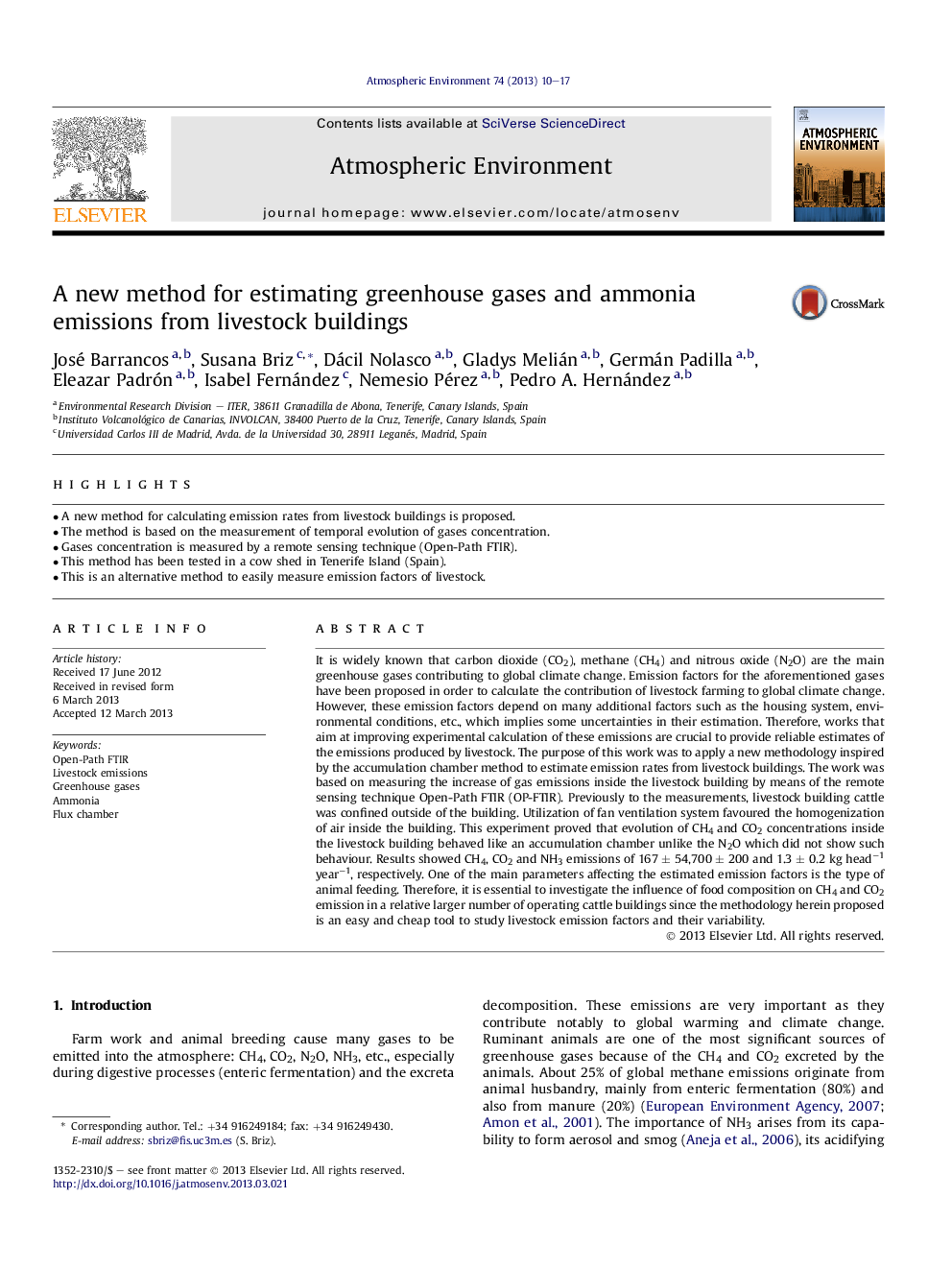| کد مقاله | کد نشریه | سال انتشار | مقاله انگلیسی | نسخه تمام متن |
|---|---|---|---|---|
| 4438169 | 1620397 | 2013 | 8 صفحه PDF | دانلود رایگان |

• A new method for calculating emission rates from livestock buildings is proposed.
• The method is based on the measurement of temporal evolution of gases concentration.
• Gases concentration is measured by a remote sensing technique (Open-Path FTIR).
• This method has been tested in a cow shed in Tenerife Island (Spain).
• This is an alternative method to easily measure emission factors of livestock.
It is widely known that carbon dioxide (CO2), methane (CH4) and nitrous oxide (N2O) are the main greenhouse gases contributing to global climate change. Emission factors for the aforementioned gases have been proposed in order to calculate the contribution of livestock farming to global climate change. However, these emission factors depend on many additional factors such as the housing system, environmental conditions, etc., which implies some uncertainties in their estimation. Therefore, works that aim at improving experimental calculation of these emissions are crucial to provide reliable estimates of the emissions produced by livestock. The purpose of this work was to apply a new methodology inspired by the accumulation chamber method to estimate emission rates from livestock buildings. The work was based on measuring the increase of gas emissions inside the livestock building by means of the remote sensing technique Open-Path FTIR (OP-FTIR). Previously to the measurements, livestock building cattle was confined outside of the building. Utilization of fan ventilation system favoured the homogenization of air inside the building. This experiment proved that evolution of CH4 and CO2 concentrations inside the livestock building behaved like an accumulation chamber unlike the N2O which did not show such behaviour. Results showed CH4, CO2 and NH3 emissions of 167 ± 54,700 ± 200 and 1.3 ± 0.2 kg head−1 year−1, respectively. One of the main parameters affecting the estimated emission factors is the type of animal feeding. Therefore, it is essential to investigate the influence of food composition on CH4 and CO2 emission in a relative larger number of operating cattle buildings since the methodology herein proposed is an easy and cheap tool to study livestock emission factors and their variability.
Journal: Atmospheric Environment - Volume 74, August 2013, Pages 10–17